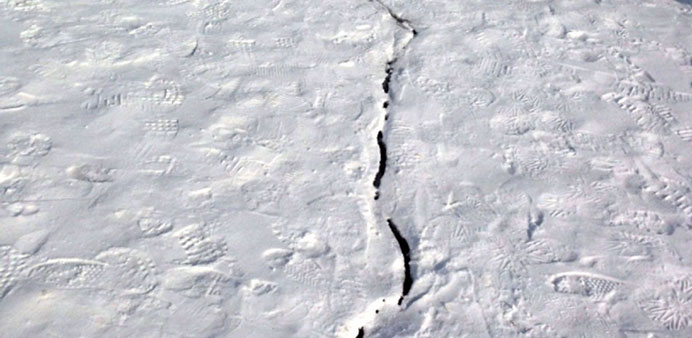BIG BANG: Frost quakes can generate a loud noise and significant shaking in a specific location. This is because they happen very close to the surface, whereas an earthquake could be many kilometres below the ground.
By Steff Gaulter
It has certainly warmed up in Doha now, and it’s also warming up in the rest of the northern hemisphere. Thursday, March 20, was the date of the spring equinox, the day that the sun crossed the equator, on its journey northwards.
From this date onwards, the days will continue to get longer and the weather will get warmer. The word equinox comes from the Latin meaning ‘equal night’, and this is the point at which day and night are nearly the same length, no matter where in the world you are.
The exact moment that the sun crosses the equator varies slightly each year. If we want to be precise, this year it happened on 20 March at 7:57pm in Doha. For some parts of the northern hemisphere, the change to spring was a huge relief; Toronto had its coldest winter for 20 years and much of the USA also had a number of exceptionally cold spells.
In fact the weather in the northern hemisphere was so cold this winter that it even triggered a number of rare events known as frost quakes.
Huge, ominous booms were heard in the dead of night in a number of US states and Canada, but the attention was really drawn to them when a number of these deep cracking noises were heard in Toronto.
Suddenly, instead of just a few people in a rural location hearing the thunderous noises, hundreds of residents started to report the noises. Some claimed they sounded like bowling balls being knocked together, other likened them to gun shots or trees snapping.
People in Canada are used to hearing cracks and pops in the winter as the cold weather causes pipes and structures to contract, but these noises were much louder and deeper.
The noises petrified some people, who thought that there must be an intruder. Other people started to look around their homes, convinced that something must have broken or fallen. One man even said he thought his roof had collapsed.
These mystifying sounds were caused by frost quakes, which are also known as ice quakes or cryoseisms. These aren’t like the powerful earthquakes that we normally hear about, but they can certainly be scary.
Earthquakes are triggered when pieces of the earth’s crust suddenly slip past each other. The edges of the crust are jagged rock, so they don’t slide smoothly. Instead the forces build up until there is a sudden jolt. The forces required to generate an earthquake are immense.
Frost quakes are far less powerful. They are generated when moisture within the ground freezes. This moisture could either be from rain or it could be ground water, the water that is naturally found underground in the cracks and spaces in soil, sand and rock.
Ice has a larger volume than water; if you put a bottle of water into the freezer, it will expand and burst out of its bottle. The same process happens when water within the ground freezes; it will expand and become too big for its confines. The large booming sound is the rock splitting apart as the ice expands.
Frost quakes are so weak that Earthquake Canada’s instruments can’t pick them up. Their lack of power also explains why they are so localised; it’s unlikely that someone half a kilometer away will feel shaking if you do.
However, frost quakes can still generate a loud noise and significant shaking in a specific location. This is because they happen very close to the surface, whereas an earthquake could be many kilometres below the ground; the closer you are to the actual movement of the earth, the more you will feel movement.
As they are weak, generally these frost quakes don’t cause much damage. They are unlikely to swallow your house or cause bridges to collapse, but every now and then, they can cause some minor damage. In 2003, an ice quake left a 70-foot wide crack in the concrete cellar floor of a home in Phillips, Maine.
More people have reported frost quakes this year than almost any other year. This has in part been due to the extreme cold weather that has plagued much of North America this winter, but it’s also due to the emergence of social media. It’s now easier for people to report hearing frost quakes, without other people thinking they were just hearing things. One lady from Toronto even made a customised map on Google Maps, encouraging people to report any frost quakes that they’d heard. This winter over 350 people registered a frost quake.
The temperature required to trigger a frost quake is below -20C (-4F), which explains why they generally happen during the night. It also means that we won’t ever hear one in Doha.
However, if you’re on holiday or on a business trip to somewhere bitterly cold and you hear a boom and some slight shaking, at least now you’ll know what it is, and maybe that knowledge will help you drift back to sleep.



